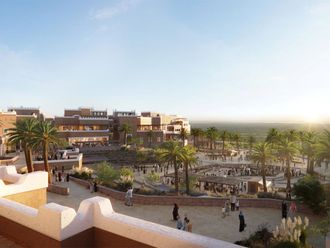
Dubai: Dubai’s Department of Tourism and Commerce Marketing (known as Dubai Tourism) said it plans to work on attracting visitors from new source markets like Indonesia and Malaysia amid a push to diversify away from traditional source markets.
For Dubai’s tourism sector, some of the largest traditional source markets include the GCC (mainly Saudi Arabia), China, the UK, and Germany.
“We will continue to focus on markets like the UK and Germany, which have traditionally played a strong part. We have secondary markets that we’re continuously looking at as well, but there’s also tertiary opportunity in other markets. We’ve done some work in South Korea, and we’ve seen some great potential for growth from there,” said Issam Kazim, chief executive officer of Dubai Tourism.
He added, “We’re testing out new markets like Indonesia and Malaysia where we know there might be some cultural relevance of our proposition that might appeal to them, so we need to test out these markets and see what potential we can actually gauge, and maybe create a lot more footfall out of those markets.”
In an interview with Gulf News at the Arabian Travel Market (ATM), Kazim said Dubai Tourism also expects to see growth in tourism arrivals to the emirate from China, Russia, and India.
This follows the introduction of visa on arrival schemes for citizens from each of those countries. (For India, only citizens with an existing green card or visa for the US will be granted visa on arrival to the UAE.)
The focus on new markets comes amid slower economic growth and weakening currencies, which are exacerbated by a strengthening US dollar (to which the UAE dirham is pegged). Analysts predicted such a slowdown may bring fewer visitors to the UAE as the country becomes a more expensive destination for many tourists.
“With the challenges that we saw last year — let’s say Brexit or the economic situation in Nigeria, and these are factors that are relatively still in play for this year — the important thing for us to make sure of our diversified marketing approach.
We’re also working very closely with our partners who understand the markets we’re going after, so that as and when needed, we can work together to shift our focus into areas with bigger growth potential,” Kazim said.
He added that despite the UK’s decision to leave the European Union and the resulting decline in the value of the British pound, Dubai saw growth in the number of British visitors during 2016 and in early 2017.
According to Dubai Tourism’s latest figures, 4.57 million travellers visited the city in the first quarter of 2017. Though Dubai Tourism did not disclose guest targets for 2017, the tourism body is aiming to attract 20 million visitors to Dubai by 2020.
Among the 10 source markets in the first quarter were Iran (with visitor numbers from there up 39 per cent year-on-year), Pakistan (up 17 per cent), the US (up 6 per cent), and Kuwait.
In 2016, Dubai welcomed 15 million visitors in 2016, and Kazim said that to reach the 2020 targets, the emirate would have a compound annual growth of 7-9 per cent.












